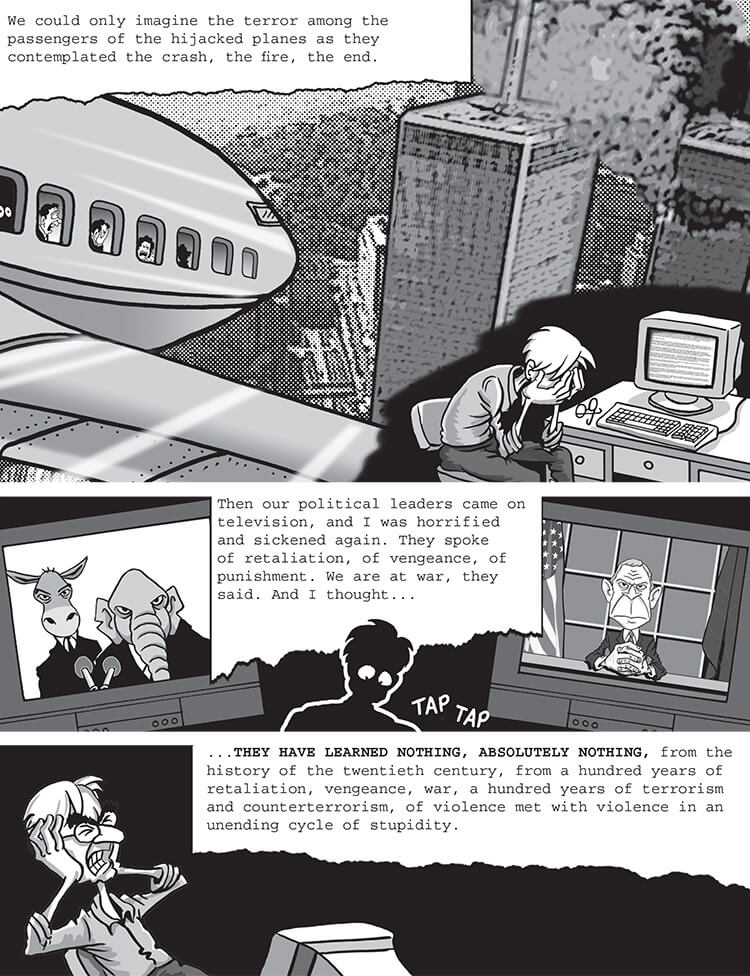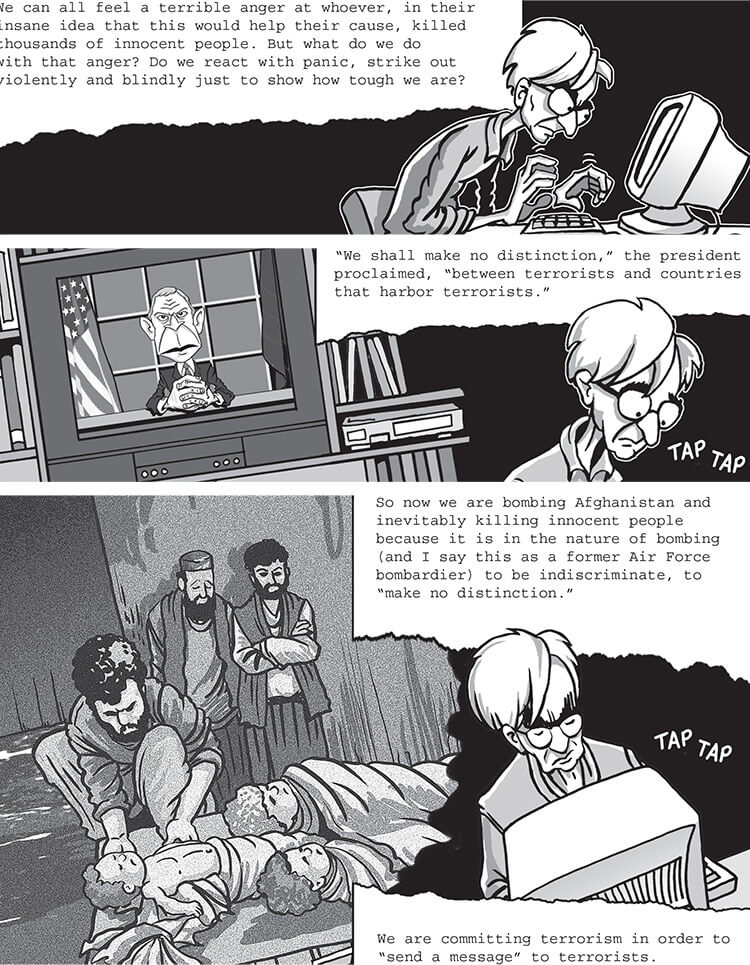Excerpt
A People’s History of American Empire
A Graphic Adaptation
by Howard Zinn
Excerpt
A People’s History of American Empire
A Graphic Adaptation
by Howard Zinn
Foreword
The history of the United States was written for many generations as a heroic conquest of the land and its original inhabitants, and as the steady spread of democracy from border to border and sea to sea. It culminated in the current nation being uniquely suited by history, perhaps by divine destiny, to make the rules for the planet and carry them out when necessary. Every sacrifice made, by Americans and others, was justified by that end. Even when, by 1950, atomic and finally thermonuclear war threatened to wipe out civilization, the sense of rectitude remained firmly in place. Americans had sought to make the world a better place, a nearly perfect place, even if they had been thwarted in the task.
The Vietnam War changed the perceptions of a generation. Some few earlier dissenting historians, such as W.E.B. DuBois, had pointed toward a markedly darker national saga, but they had been not much heard. Then, an evident crisis in empire brought into view past crises of empire, internal as well as external, and the high price that had been paid for those crises. Another story began to be told, not of America as a wicked place or Americans as wicked people but of the trouble in the soul of an imperial nation.
Beginning in the 1960s, scholars of various kinds started to write widely about Indians, African Americans, working people, and women, of struggles for reform won and lost, of wealth gained at vast public expense in squandered dollars and lives. This was the saga of the internal empire, precursor in many ways to the transcontinental empire to follow. None of the scholars charting this empire epitomized the truth teller and political visionary better than the then young professor Howard Zinn. None reached as many readers, a decade after the decline of the social movements of the 1960s, as an older Zinn. A People’s History of the United States (first published in 1980), its pages afire with lucidity, set a new standard for the retelling of the nation’s story, this time linked closely to other peoples everywhere, and likewise to a distant human past and a hoped for future.
A People’s History of American Empire is not intended to displace A People’s History, something that would be impossible in any case. It is intended to present the key insights in Howard Zinn’s marvelous volume in the light of another art form, with artist Mike Konopacki working from a script developed chiefly by Dave Wagner. The pages that follow are narrated largely by Zinn himself, or rather by a character based as closely as possible upon Zinn’s own words. Herein, we find the story of the narrator as an inescapable part of the history he wrote.
Comics, sequential art forms, are as old as cave drawings. They precede written history and, like oral history, lend themselves best to storytelling. Perhaps for that reason, comics flow almost naturally from the writings of the superb storyteller. The editor and the writer-artist have taken some liberties with the original, mainly for reasons of dramatic presentation, but with no essential shift from the original ground. Also, the autobiographical Howard Zinn of You Can’t Be Neutral on a Moving Train here becomes part of the story, of the twentieth century—and beyond.
By this means, and armed with an artistic technique that brings together visual documents of various kinds with original art, we hope to say that we have brought something original into the world.
PAUL BUHLE














